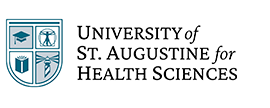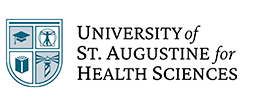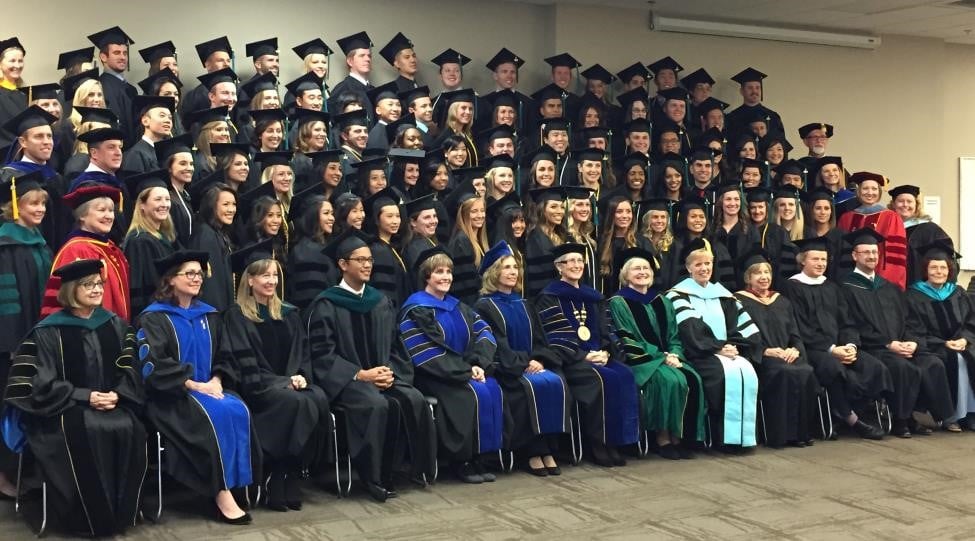
How far do you want to go with your nursing career? Whether you want to focus on patient care or rise to a top position in a healthcare organization, several levels of nursing are open to you. Which doors open and when depends on your level of nursing degrees and professional experience. Additionally, there are nursing role specialties, state-mandated exams and diverse job titles within nurse levels to consider when applying to programs and planning your healthcare career.
What Are the Types of Nurses?
In general, different levels of nursing fall into three categories: non-degree, degree and advanced degree. Non-degree nurses include certified nursing assistants (CNAs) and licensed practical nurses (LPNs) who complete nursing-level education programs that don’t culminate in a degree. Levels of nurses include those with an undergraduate degree in the field, such as an Associate of Science in Nursing (ASN) or a Bachelor of Science in Nursing (BSN). Advanced-degree nurses are those with a graduate degree in the field, such as a Master of Science in Nursing (MSN) or Doctor of Nursing Practice (DNP).
What Are the Different Levels of Nursing?
Let’s review the different levels of nursing and the types of nursing degree levels and exam certifications required for each, starting with entry-level nursing positions and to master’s and doctoral-level roles.
Apply to Our Nursing School Today
1. Certified Nursing Assistant
Position Description: Certified nursing assistants (CNAs) typically work in home care and long-term care settings. Also referred to as nursing assistants and nursing aides, CNAs often serve as the primary point of contact between the patient’s family members and the healthcare organization. They assist with daily patient activities, such as bathing, dressing, eating and ambulating. At this level of nursing, CNAs provide companionship and compassionate care. Depending on state regulations and training, they may administer medication, take vital signs, fill out patient charts using electronic medical record software and perform other tasks that don’t require advanced training.
Nursing Degree Level Requirements: Becoming a CNA typically requires a high school diploma or GED, as well as completion of a state-approved CNA program.1 These programs require a specified number of training hours, classroom hours and lab or clinical practice. Once program requirements are completed, aspiring CNAs must pass a state-approved exam to earn their CNA title and become state-certified.
CNA Median Annual Salary: $18.96/hour, $39,430/year2
Projected Growth (2023-2033): As fast as average (4%), with 216,200 job openings projected each year, on average, over the decade.2
2. Licensed Practical Nurse
Position Description: This level of nurse, known as a licensed practical nurse, is responsible for providing patient care by acting as the primary communicator between the healthcare team and the patient. They may be responsible for communicating with the patient’s family. LPNs monitor patient health and perform physical care tasks, such as taking blood pressure, inserting catheters, starting IVs and changing bandages.3 Whether the LPN needs supervision to perform these tasks varies by state.
Nursing Degree Level Requirements: Becoming an LPN does not require an associate degree or bachelor’s degree but rather the successful completion of a practical nursing certificate program.3 These programs can typically be completed within one year and are designed for working individuals. To receive your state license, which grants you the ability to practice, you must pass the National Council Licensure Examination for Practical Nurses (NCLEX-PN).
LPN Median Annual Salary: $29.97/hour, $62,340/year4
Projected Employment Growth (2023-2033): As fast as average (3%), with 54,000 job openings projected each year, on average, over the decade.4
3. Registered Nurse
Position Description: Most people associate the word nurse with the role of a registered nurse (RN). RNs are a level of nurses with a broad range of responsibilities, including administering medication, contributing to a patient’s plan of care and collaborating with medical doctors. In some workplaces, RNs oversee CNAs and LPNs. Once you reach the RN level of nursing, more specialized positions open up, such as cardiac care nurse, case management nurse and flight nurse.5
Nursing Degree Level Requirements: To become an RN, earn either an Associate of Science in Nursing (ASN) or a Bachelor of Science in Nursing (BSN). After successfully graduating from either type of program, you must take and pass the NCLEX-RN exam, not the NCLEX-PN.
RN Median Annual Salary: $45.00/hour, $93,600/year5
Projected Growth (2023-2033): Faster than average (6%), with 194,500 job openings projected each year, on average, over the decade.4
In most states, nursing degree levels such as an ASN and BSN, along with passing the NCLEX-RN exam, qualify you to work as an RN. However, some states are pushing legislation that requires RNs to earn a BSN. The State of New York did so in 2018, requiring a bachelor’s degree within the next 10 years to practice as an RN.7 Below, you will find more information on how the two nursing levels differ and the long-term impact of your degree on your career path.
A master’s degree in nursing paves the way for advanced career opportunities and expanded employment options. The University of St. Augustine for Health Sciences (USAHS) offers two points of entry into its MSN program: RN to MSN and BSN to MSN.


Associate of Science in Nursing (ASN)
Becoming an RN through an associate degree nursing program is ideal for those who do not want to attend a four-year program. In the past, these programs were typically offered through community colleges. Now, however, some four-year institutions are offering ASN, or Associate Degree in Nursing (ADN), programs. Hybrid programs, which combine online and in-person learning, are becoming increasingly popular for those pursuing this level of nursing.8
Bachelor of Science in Nursing (BSN)
In today’s job market, the BSN leads all nursing levels, in general, to better salaries and more opportunities.9 A BSN program typically takes four years to complete and may require full-time immersion. However, a hybrid BSN program is available for those who need to work while earning their degree.
It is becoming increasingly mandatory for RNs to earn a BSN. Some states now require RNs with ASNs to return to school for further training. One driver for this trend is that several studies have demonstrated better patient outcomes when RNs have a BSN.10
If you want to build on your BSN foundation and pursue an advanced practice nursing role, consider USAHS’ online BSN to DNP program.
4. Advanced Practice Registered Nurse
Position Description: To become an advanced practice registered nurse (APRN), you must be an RN ready to take on more of a leadership role in patient care. While RNs typically focus on implementing a plan of care, APRNs focus on directing a plan of care. Becoming an APRN often requires further education, such as a Master of Science in Nursing (MSN). Types of APRNs include nurse practitioners, nurse anesthetists, nurse midwives and clinical nurse specialists.11
USAHS offers an MSN program with a Family Nurse Practitioner (FNP) role specialty, which leads to becoming a . NP is a nursing level that allows you to perform the typical duties of an RN, as well as diagnose and treat illnesses, prescribe medication with physician supervision in some states, advise on public health issues and provide more advanced interventions. NPs with an MSN degree work in hospitals and long-term care settings but also in private practice and community clinics.11
Nursing Degree Level Requirements: If you want to study to become an APRN, you must have an RN license and usually at least one year of experience working as an RN. After you earn your degree, you must pass a certification exam from an accredited national organization, such as the American Academy of Nurse Practitioners Certification Board. APRNs have completed at least a master’s degree, building on the foundational education and licensure required to become a Registered Nurse (RN).11
APRN Median Annual Salary: $63.48/hour, $132,050/year12
Projected Employment Growth (2023-2033): Much faster than average (40% increase), with 31,900 job openings projected each year, on average, over the decade.12


5. Master of Science in Nursing (MSN)
Position Description: A Master of Science in Nursing (MSN) is not one of the levels of nursing but a degree you need to become a nurse practitioner (NP) or to choose another role specialty.
USAHS offers several role specialties within its MSN program: Family Nurse Practitioner (FNP), Psychiatric Mental Health Nurse Practitioner (PMHNP), and Earning your master’s degree is an opportunity to deepen your clinical expertise or grow as a healthcare leader. Whether you’re preparing to provide advanced patient care, lead organizational initiatives, or educate the next generation of practitioners, the MSN program supports your path to specialized professional growth.
Nursing Degree Level Requirements: Most MSN programs require candidates to have practiced as an RN with a BSN for at least one year, with proof of an unrestricted RN license. Other admissions requirements for MSN programs may include a background check, a personal essay, a resume or curriculum vitae and professional references. Within USAHS’ MSN curriculum, the number of credit and contact hours needed depends on the role specialty.
APRN Median Annual Salary: $63.48/hour, $132,050/year12
Projected employment growth (2023-2033): Much faster than average (40% increase), with 31,900 job openings projected each year, on average, over the decade.12
6. Doctor of Nursing Practice (DNP)
Position Description: Like the MSN, the Doctor of Nursing Practice (DNP) is not a role but one of the levels of nursing degrees you can earn, and doctoral-level preparation can be considered as the next level of nursing above the MSN. DNP programs, along with Doctor of Philosophy (PhD) programs, are for those who want to reach the highest level of nursing. DNPs have a doctoral-level knowledge of healthcare policy, nursing practice, health information systems and organizational leadership. Attending a DNP program is best for experienced levels of nurses who enjoy creative problem-solving and turning strategy into practice.


Nursing Degree Level Requirements: You can apply for a DNP nursing program with either a BSN or an MSN. The BSN-entry nursing student will have a longer plan of study. Two common DNP role specialties are Family Nurse Practitioner (FNP) and Nurse Executive. Similar to MSN programs, a DNP typically requires you to have worked at least one year as an RN or APRN. If you are an RN, you will likely need to have a BSN rather than an ASN degree. USAHS’ DNP curriculum consists of 42–71 credits and 540–1035 practicum hours, depending on which degree you enter with and which role specialty you choose.
The following salary and job outlook data applies specifically to APRN roles such as Family Nurse Practitioner (FNP), not administrative roles like Nurse Executive.
APRN Median Annual Salary: $63.48/hour, $132,050/year12
Projected Employment Growth (2023-2033): Much faster than average (40% increase), with 31,900 job openings projected each year, on average, over the decade.12
7. Nurse Managers and Executives
Position Description: Nurse managers and nurse executives can help run clinics, or they may work for a hospital system at the C-suite level in healthcare management by helping strategize and plan care for hundreds of patients. If you aspire to the top nursing levels of administration, you will be less involved with direct patient care, but your decisions may have a broad impact on patients. You will need to cultivate qualities such as integrity and flexibility, and skills such as communication, critical thinking, and leadership.
Nursing Degree Level Requirements: To become a nurse manager or executive, you will likely need an MSN or DNP with a role specialty in executive leadership.
How to Choose From the Levels of Nursing
When considering which stages of nursing are best for you, think about your short and long-term nursing career goals and what environment excites you most. Do you thrive when working with patients, or do you want to influence organizational decisions? Determine where you thrive so as not to experience nurse burnout. Regardless of which nursing levels you strive for, more education is available to help you further your career.
The University of St. Augustine for Health Sciences (USAHS) offers a Master of Science in Nursing (MSN), a Doctor of Nursing Practice (DNP) and Post-Graduate Nursing Certificates designed for working nurses. Our degrees are offered online, with optional on-campus immersions.* Role specialties include Family Nurse Practitioner (FNP), Psychiatric Mental Health Nurse Practitioner (PMHNP)** and Nurse Executive. The MSN and DNP have options to accelerate your time to degree completion. Earn your advanced nursing degree while keeping your work and life in balance.
*The FNP role specialty includes one required hands-on clinical intensive as part of the curriculum.
**The Psychiatric Mental Health Nurse Practitioner role specialty is not available for the DNP program.
Salary data may not reflect starting pay for recent graduates.
Sources
- Registered Nursing, “CNA Certification,” Registered Nursing.org, February 14, 2025, https://www.registerednursing.org/certified-nursing-assistant/certification/.
- U.S. Bureau of Labor Statistics, Occupational Outlook Handbook, “Nursing Assistants and Orderlies,” BLS, April 18, 2025, https://www.bls.gov/ooh/healthcare/nursing-assistants.htm.
- Nurse.org Staff, “Licensed Practical Nurse (LPN) Guide | Salary & Programs 2025,” Nurse.org, July 31, 2024, https://nurse.org/resources/licensed-practical-nurse-lpn-lvn/.
- U.S. Bureau of Labor Statistics, Occupational Outlook Handbook, “Licensed Practical and Licensed Vocational Nurses,” BLS, April 18, 2025, https://www.bls.gov/ooh/healthcare/licensed-practical-and-licensed-vocational-nurses.htm.
- Johnson & Johnson, “Nursing Specialties,” Johnson & Johnson, 2025, https://nursing.jnj.com/specialty.
- U.S. Bureau of Labor Statistics, Occupational Outlook Handbook, “Registered Nurses,” BLS, April 18, 2025, https://www.bls.gov/ooh/healthcare/registered-nurses.htm.
- “BS in 10 Law: Frequently Asked Questions,” American Nurses Association New York (ANA-NY), 2025, https://anany.org/policy-and-advocacy/bs-in-10-faq.
- Charmaine Robinson, “RN Diploma vs. ADN vs. BSN Degree: What’s the Difference?” Nurse Journal, May 2, 2024, https://nursejournal.org/degrees/bsn/rn-and-bsn-degree-differences/.
- Meg Lambrych, “Top Advantages of A BSN Degree,” Nurse Journal, May 22, 2024, https://nursejournal.org/degrees/bsn/top-advantages-of-a-bsn-degree/.
- American Association of Colleges of Nursing, “Fact Sheet: The Impact of Education on Nursing Practice,” AACN, June 2024, https://www.aacnnursing.org/Portals/42/News/Factsheets/Education-Impact-Fact-Sheet.pdf.
- American Nurses Association, “Advanced Practice Registered Nurse (APRN),” ANA, 2025, https://www.nursingworld.org/practice-policy/workforce/what-is-nursing/aprn.
- U.S. Bureau of Labor Statistics, Occupational Outlook Handbook, “Nurse Anesthetists, Nurse Midwives, and Nurse Practitioners,” BLS, April 18, 2025, https://www.bls.gov/ooh/healthcare/nurse-anesthetists-nurse-midwives-and-nurse-practitioners.htm.








